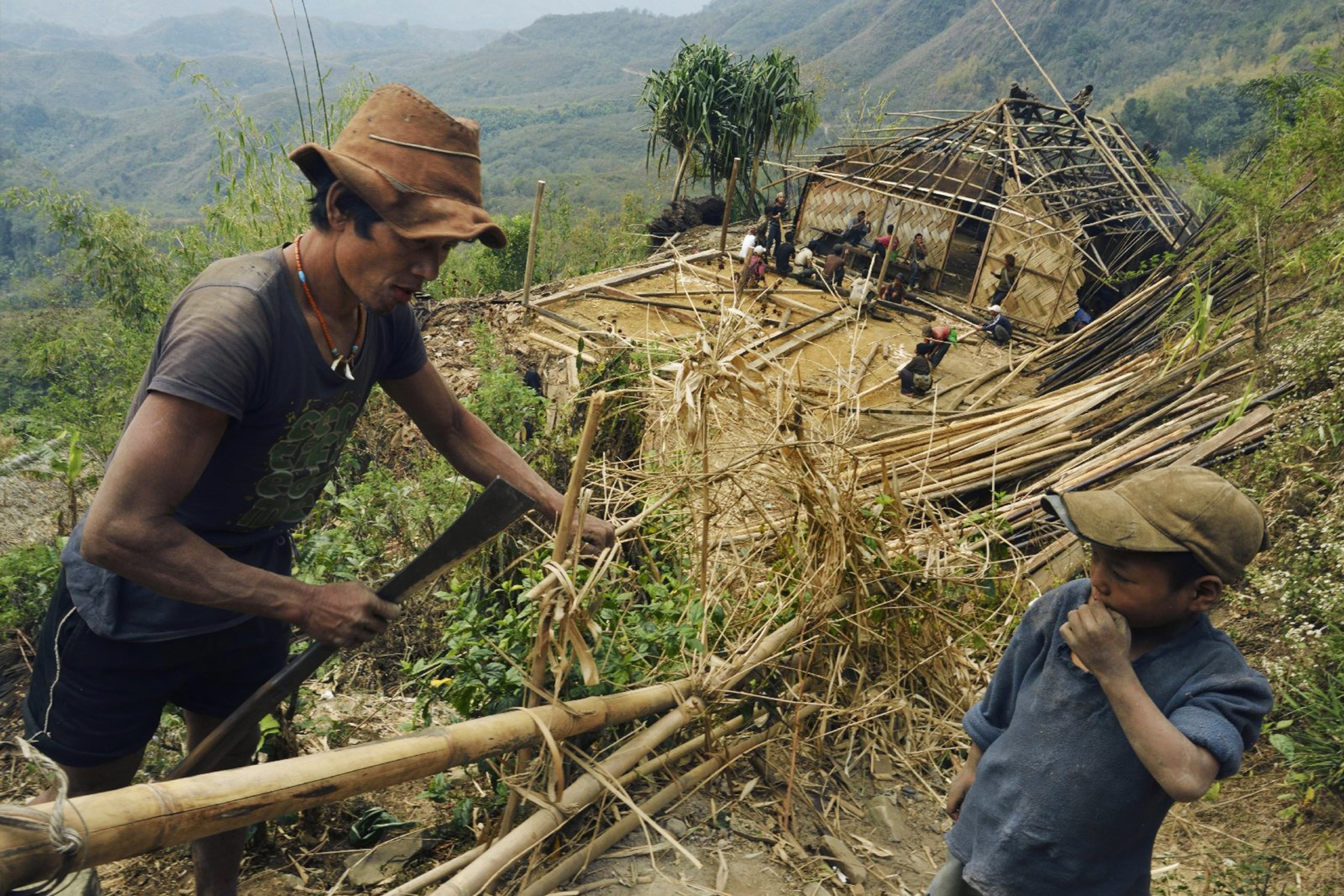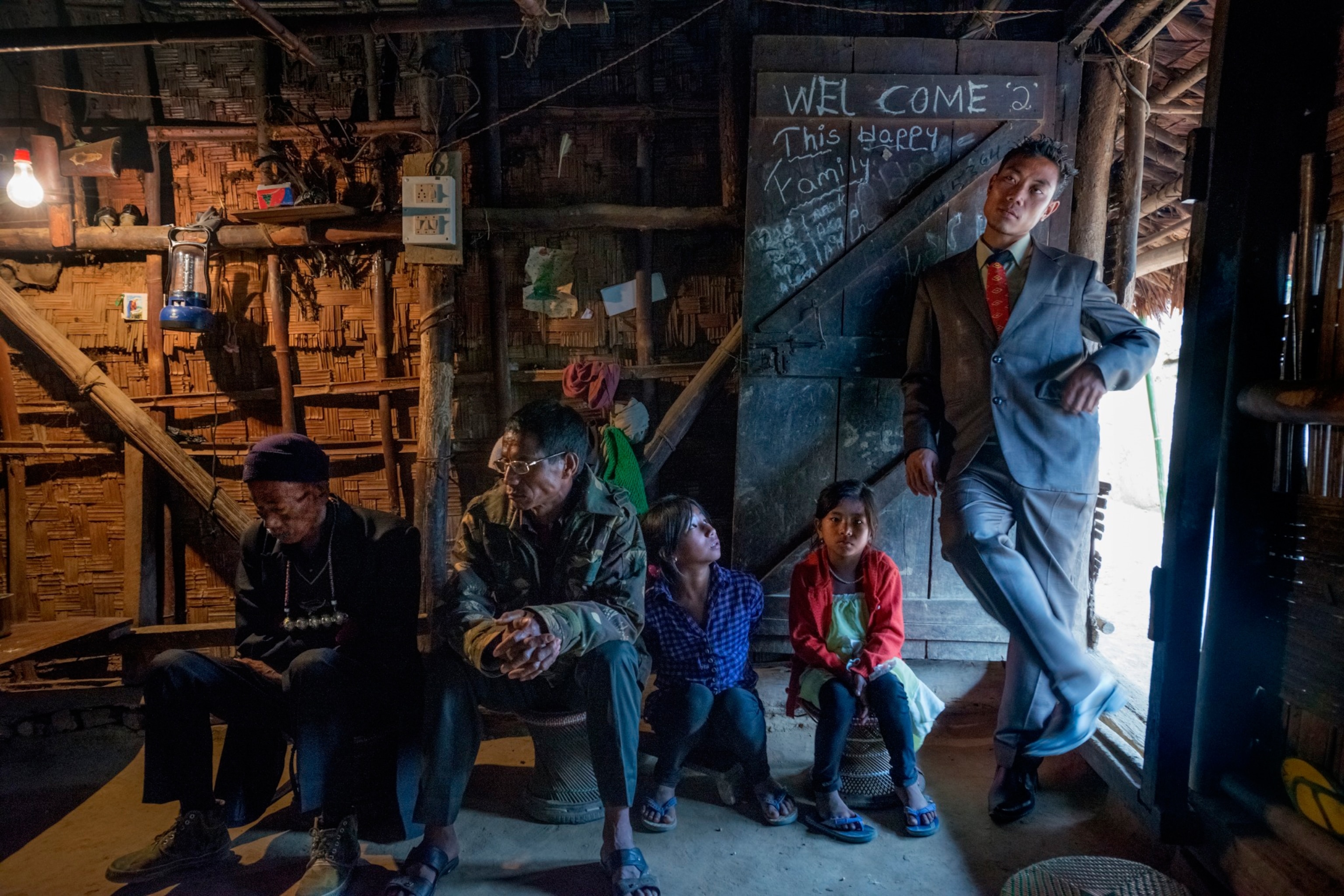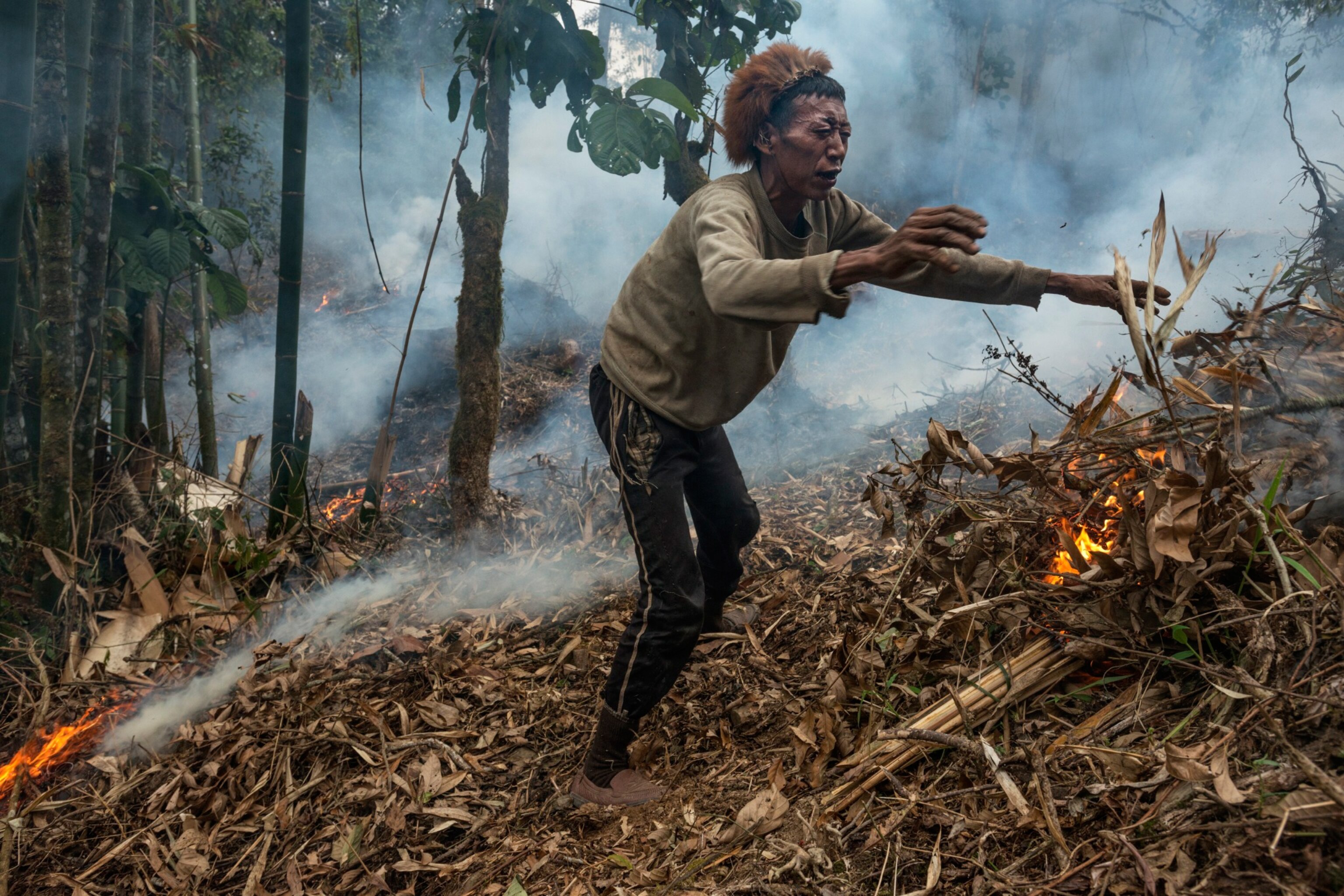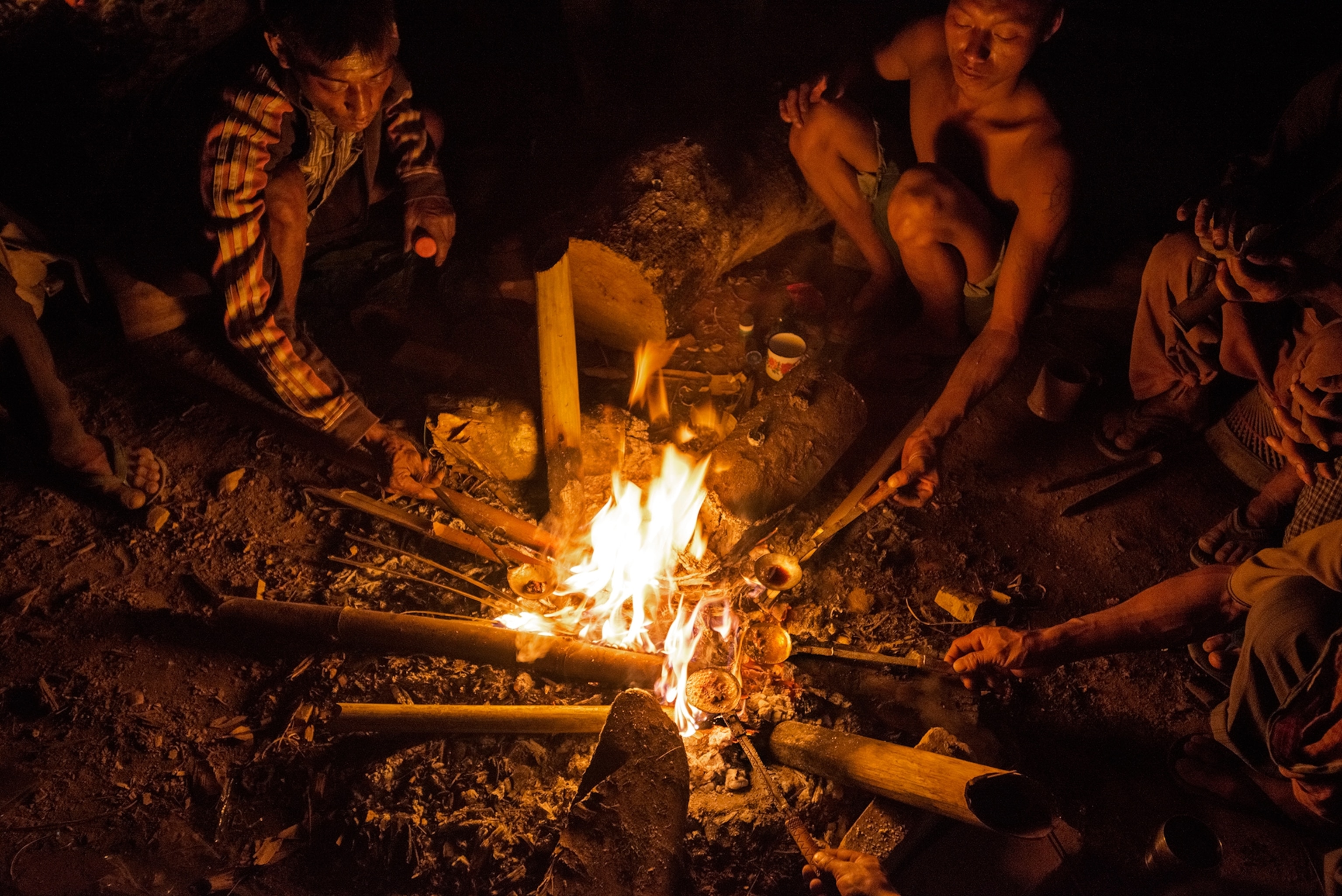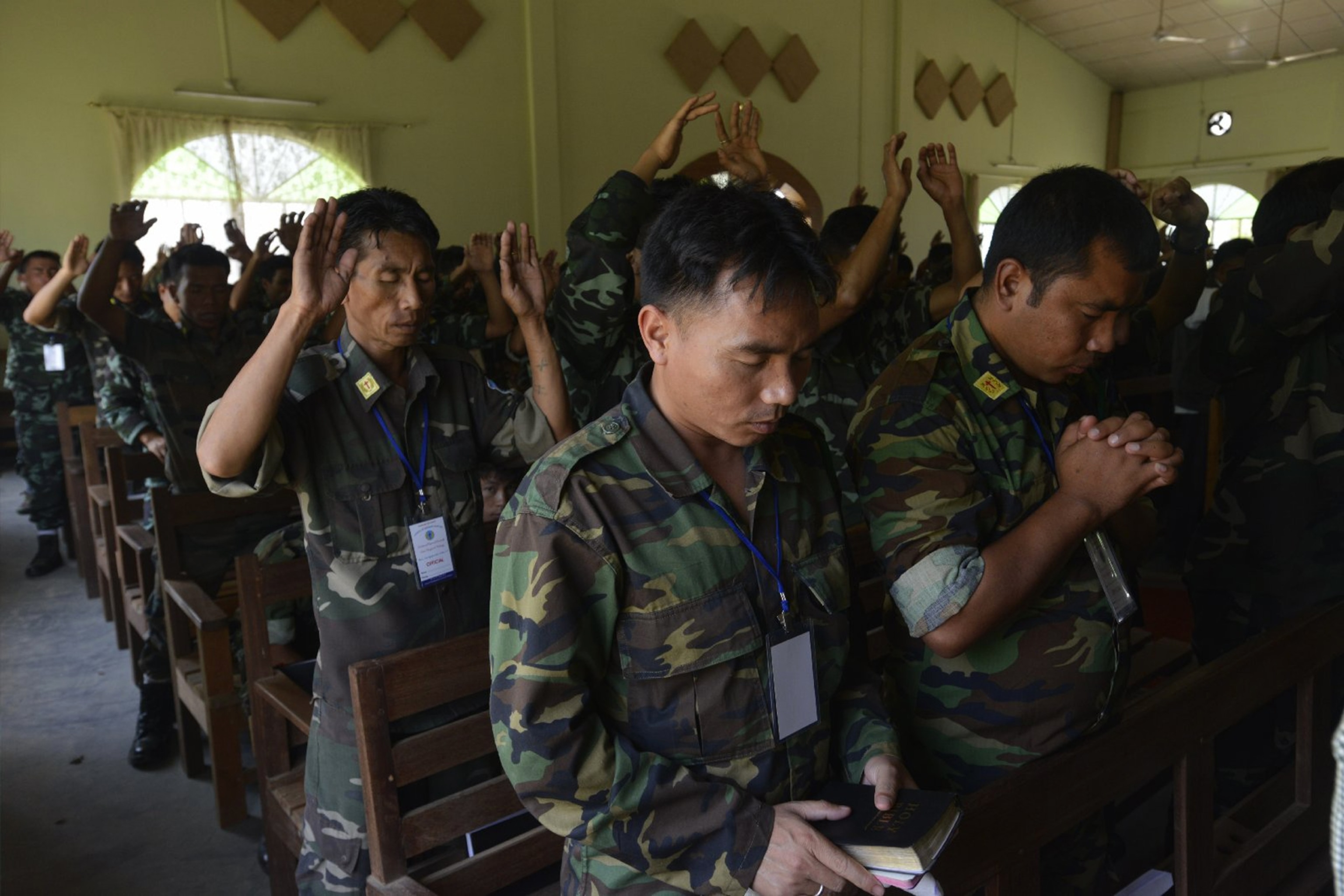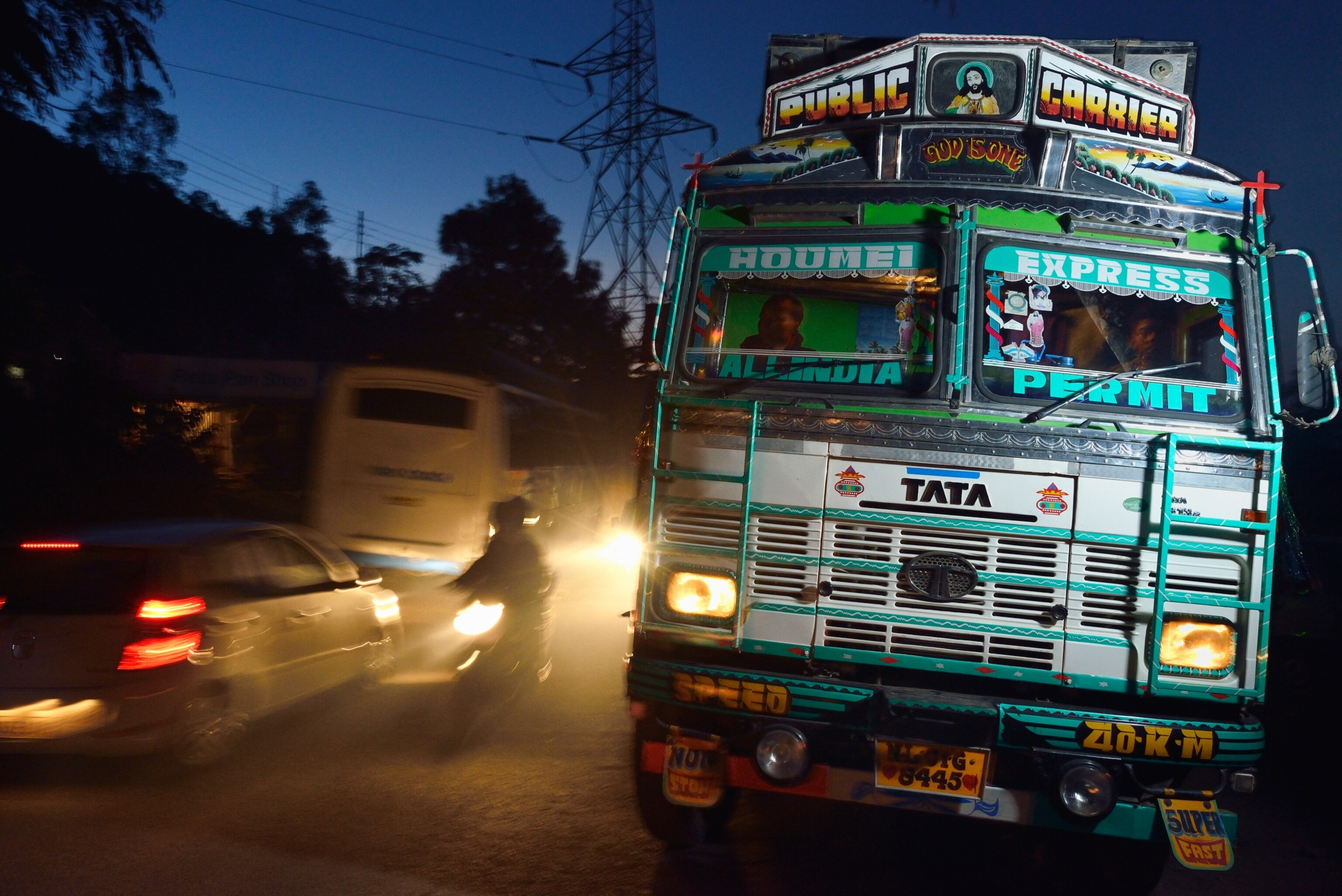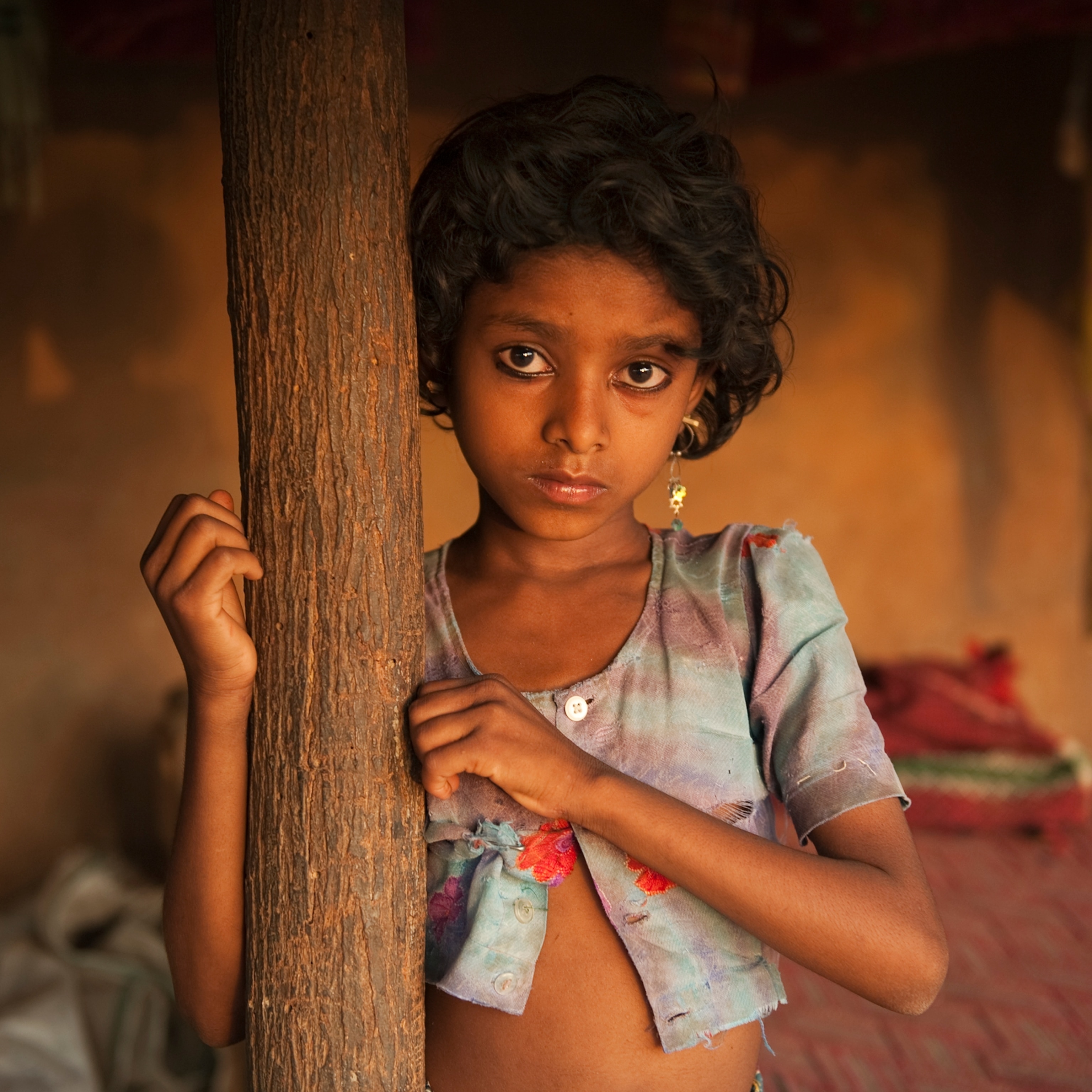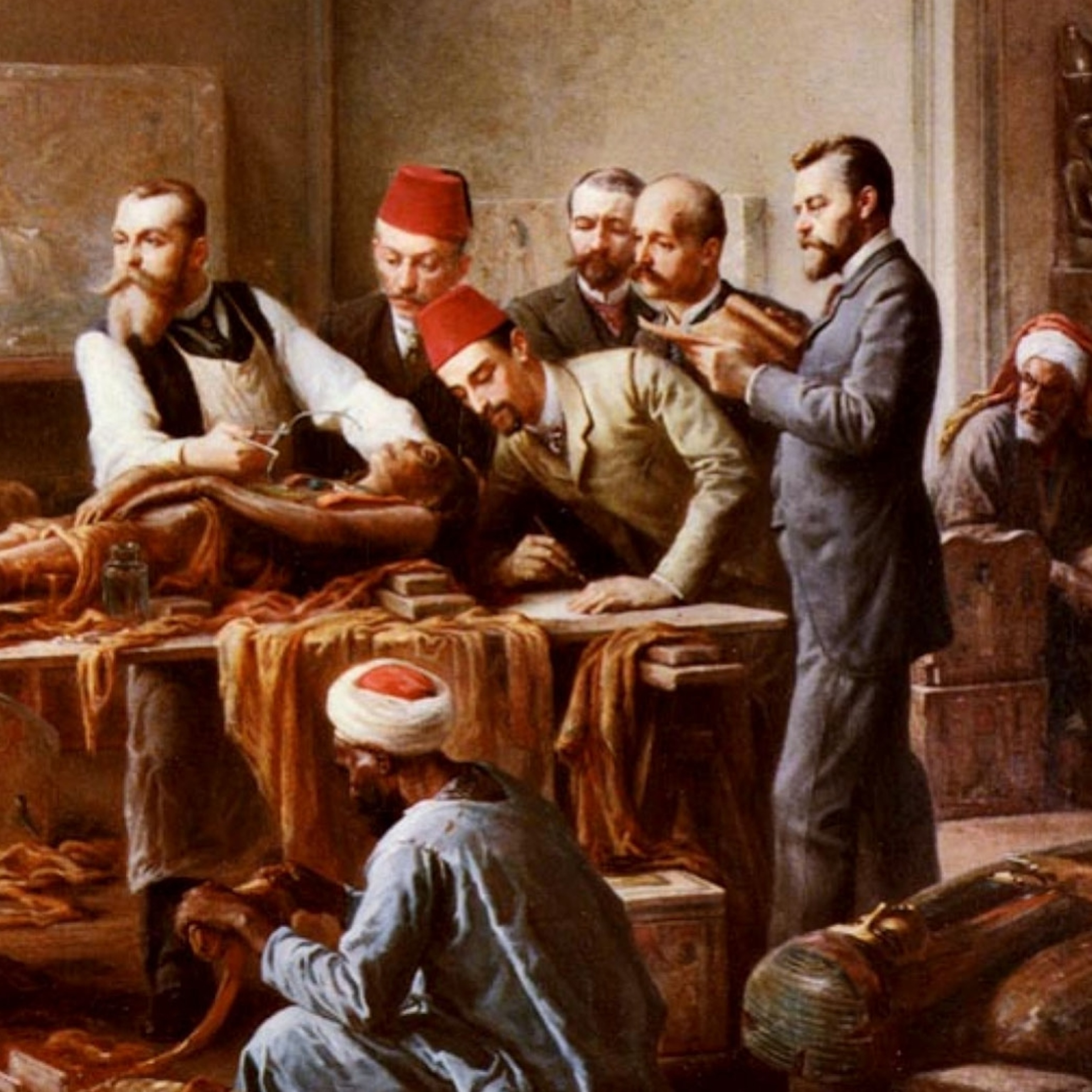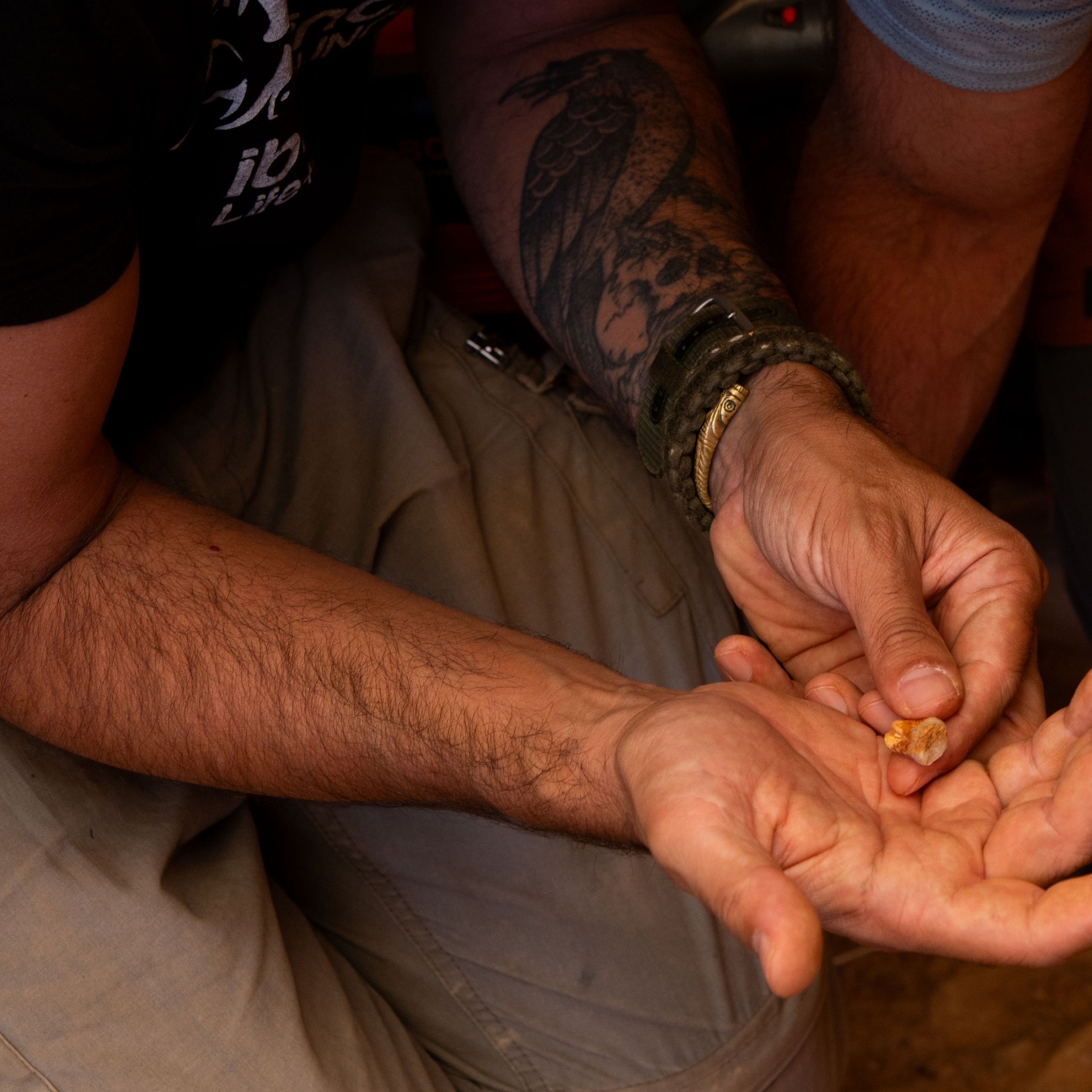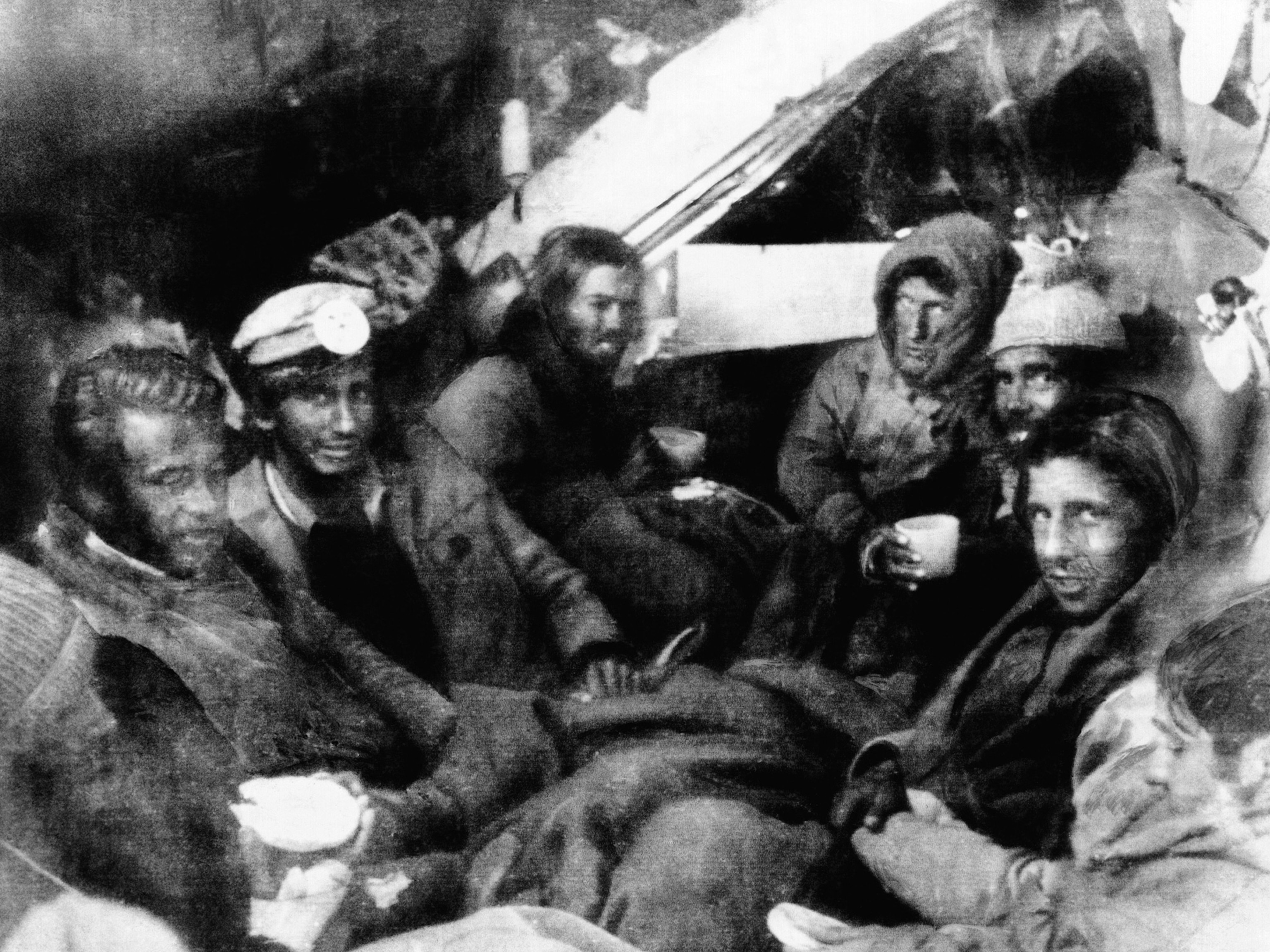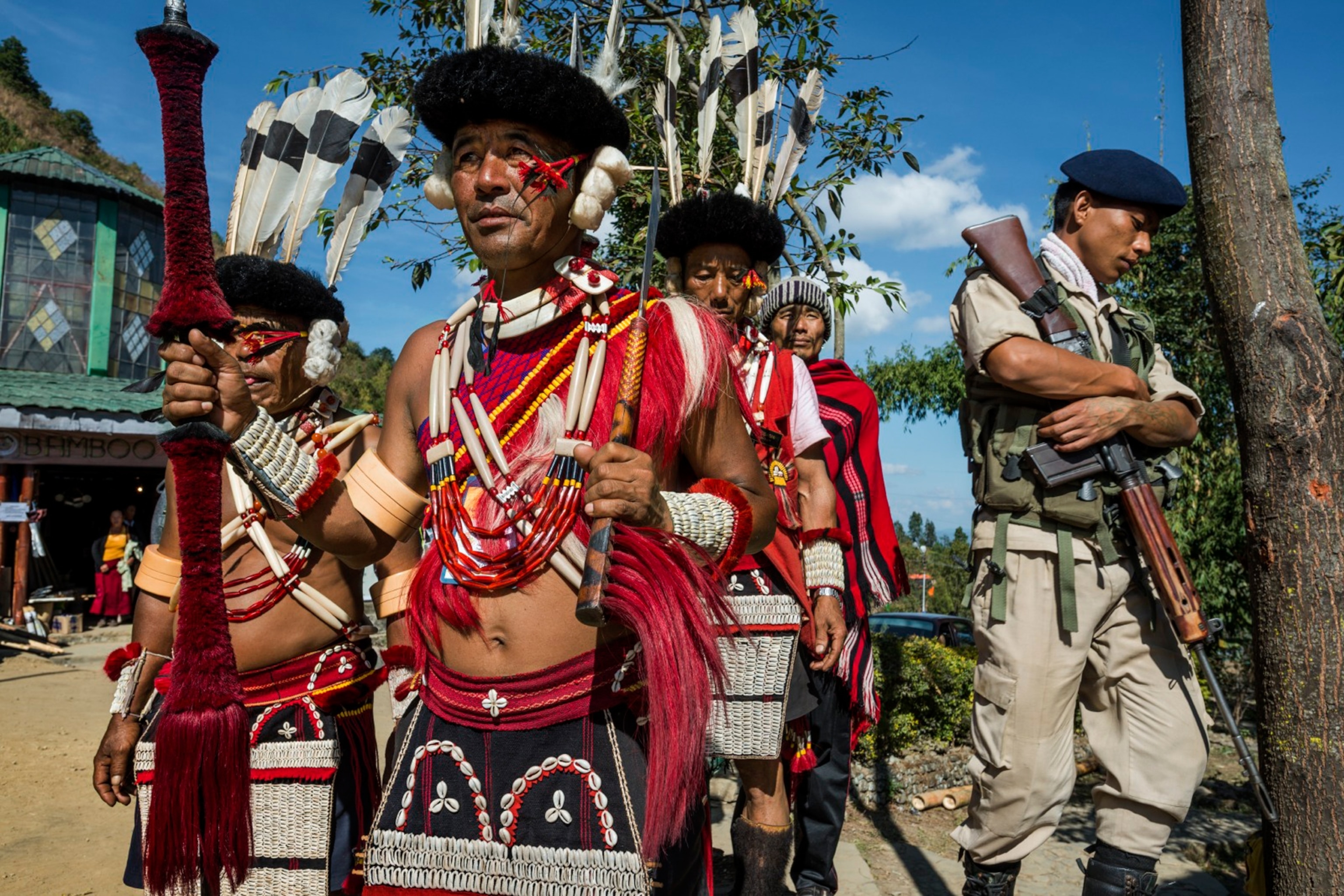
Can India's Land of Former Headhunters Make Peace?
For the remote Naga tribes, a surprise accord with Delhi aims to end one of the world's longest-running insurgencies.
His facial tattoo has faded over the years, but Nokying Wangnao can’t forget the first human head he took six decades ago. It was the head of a young boy.
Wangnao is one of several hundred former headhunters still living in the mist-covered Naga hills along the wild frontier between India and Myanmar. When I met him in his thatched hut in the village of Hongphoi, he was weaving a bamboo basket and wearing a necklace of five bronze skulls—one for each head he took.
Now believed to be in his mid-80s, Wangnao calculates his age by counting the rice harvests he saw before Christianity arrived in Hongphoi half a century ago and put an end to the Nagas’ fearsome tradition of headhunting.
Still, Wangnao’s memory of that first raid on a rival village is vivid. After receiving a shaman’s blessing and walking through the forest all night, he said, “we hid near the enemy’s well and ambushed the first villagers who arrived at daybreak.”
It was the young boy’s misfortune to be the first to arrive.
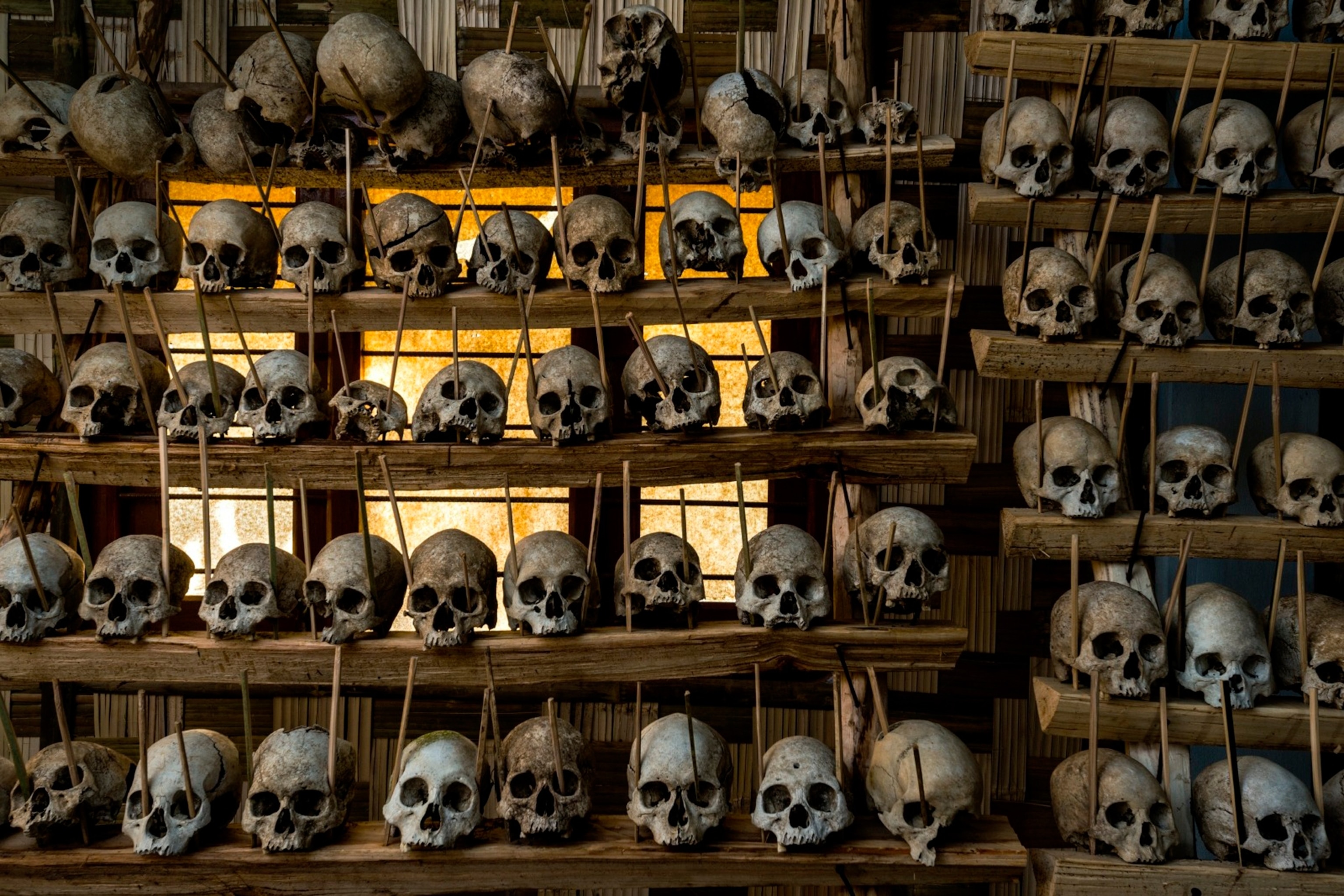
For the Nagas—a collection of 35-plus hill tribes, an estimated 3.5 million people, draped across a swath of mountainous terrain about the size of Pennsylvania—the conversion to Christianity and the end of headhunting didn’t bring peace. But those events helped unify the Nagas, for a time at least, as they got embroiled in what would become one of the world’s longest-running insurgencies, a six-decade struggle for independence from the Indian state.
On August 3, the Indian government signed a framework agreement with the largest of many rebel groups, the Isak-Muivah faction of the National Socialist Council of Nagaland, or NSCN (IM)—an unexpected move that many hope will bring a lasting peace to this region after decades of armed conflict and centuries of violence.
Like many Nagas, Wangnao—a member of the Konyak tribe—prides himself on his warrior past. But headhunting, he insists, was not simply a means of waging war. According to the Nagas’ animist beliefs, human skulls possessed a life force that could ensure the prosperity of crops, animals, and tribal clans.
When Wangnao recalls his first raid, he shows no misgivings about the tender age of his victim—“Every head has power,” he says—and focuses on the ecstatic reception he and his fellow warriors received upon their return to Hongphoi.
As the young men paraded around the village, brandishing the hunted heads by their topknots, women offered rice wine. Older men sacrificed a water buffalo. Later, after boiling off the flesh and hair—"We weren't cannibals," Wangnao says—they placed the skulls on a flat stone outside the village chieftain's house.
The following day, to mark Wangnao’s initiation into adulthood, the chieftain’s wife began to tattoo a dark, mask-like pattern on his face and chest. The fading ink still identifies him as one of the last surviving Naga headhunters.
See Photos of the Nagas and Their Culture in Transition
The Art of Not Being Governed
No single detail about the Nagas is more perplexing—or more influential in any discussion of war and peace in the region—than the fact that, until recently, there was no such thing as the Nagas.
When Wangnao’s ancestors arrived in these rugged hills more than a thousand years ago—anthropologists believe they were migrants from southern China or Mongolia—they had no collective name for themselves.
Even in the early 1800s, when British colonialists and American Baptist missionaries first made contact with the Nagas, they still had no broad tribal identities. Every clan was a nation unto itself, every hilltop a republic.
The tribes now collectively recognized as Nagas coalesced only over the past two centuries, mainly through their encounters with outsiders. (Scholars believe the word “Nagas” came either from the Burmese word naka, meaning "those with pierced ears," or the Assamese word nahnga, meaning “fierce warriors.”)
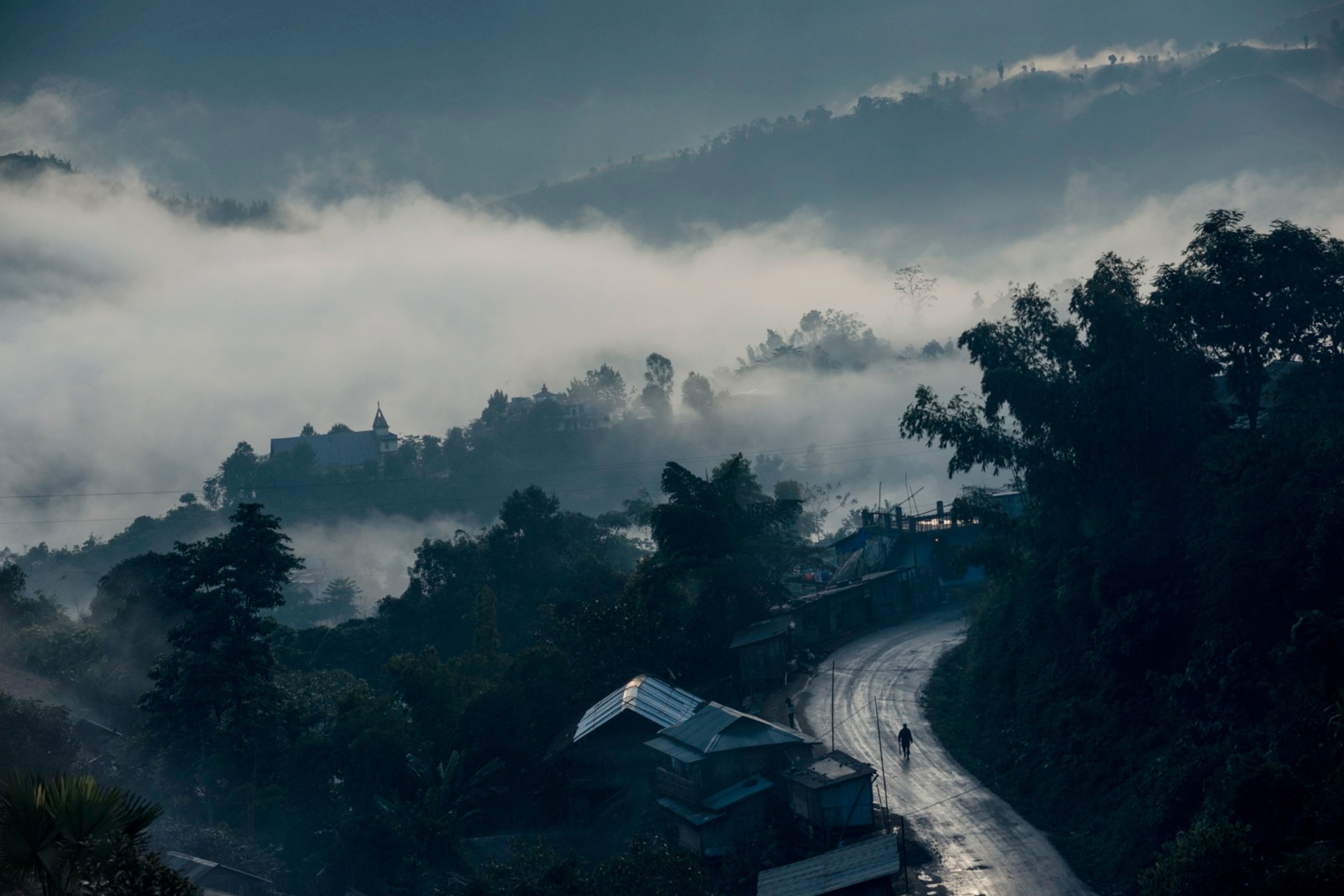
Headhunting was not a sideshow for these hill people but a tradition that shaped their culture as profoundly as the vertiginous landscape around them.
Building hamlets on hilltops for defensive purposes, Naga clans lived in isolation, nurturing local languages and customs—and a fierce resistance to outsiders.
It took the British Empire nearly 50 bloody years to subdue the Nagas. Even then, large tracks of the Naga Hills remained officially “unadministered” until the Raj’s demise in 1947.
The empire’s last stroke—a cartographer’s line through Naga territory—left the Nagas straddling two countries, India and Burma (now Myanmar), to whom they feel neither kinship nor loyalty.
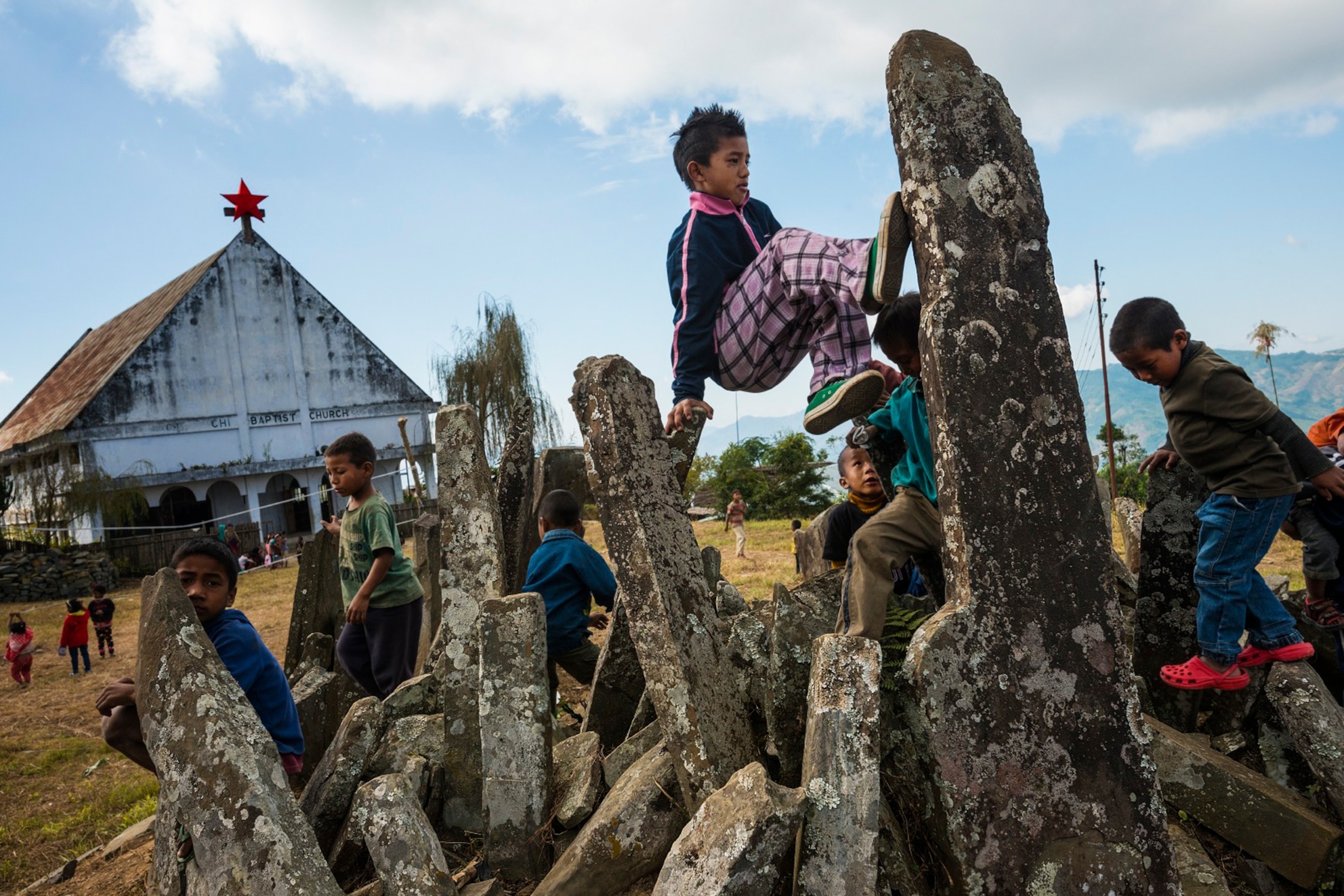
Though living in isolation, the Nagas exemplify the experience of tens of millions of people living in the highlands of Asia from Tibet to central Vietnam. Like other hill peoples—among them the Wa, Hmong, Kachin, and Karen—the Nagas have long resisted the incursions of lowland states and empires.
History written by empires is often portrayed as the march of civilizing forces against barbarians at their perimeter. But the people of “Zomia”—as some academics now call this highland region—offer a compelling counterhistory. Keen to maintain their identity and independence, these societies seem constructed to keep so-called civilization at bay.
In many ways, the Nagas’ continuing odyssey of self-determination encapsulates what Yale political scientist James C. Scott—the pied piper of Zomia—calls “the art of not being governed.”
When Christianity and Headhunting Collided
Christian missionaries were one group that overcame Naga resistance.
How did they turn this land of former headhunters into the most Baptist region in the world, a place where American hymns and gospel music have displaced the beating of log drums?
American Baptists came to northeastern India in the 1830s, accepted by the British as potential pacifiers of an unruly population.
The first American to risk his head in Naga territory itself, however, was New Yorker Edwin W. Clark. In 1872, after baptizing the first group of Nagas at a lowland mission, Clark moved to an Ao Naga village—and stayed there, with his wife, for nearly 40 years.
The Clarks opened a mission school that trained Nagas, mostly members of the Ao tribe, to evangelize in remote areas where foreigners were not welcome.
By the 1940s, nearly half the Naga population had converted, lured by the trappings of modernity—education, medicine, and a religion that espoused peace—even as missionaries sought to destroy their traditions.
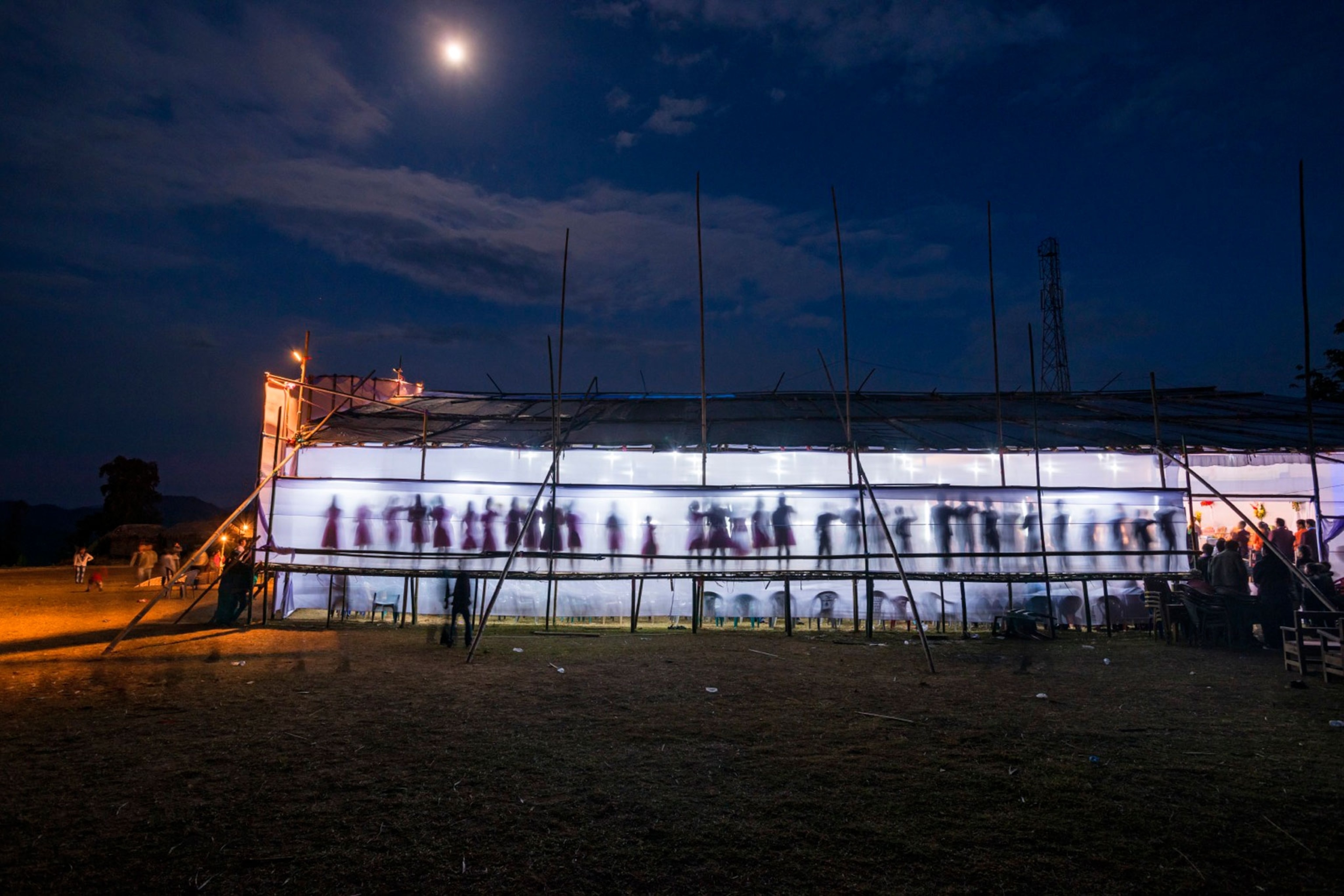
Dancing and drum playing were banned, traditional relics and clothes burned—and skulls buried. The Baptists gave the disparate Naga tribes tribes a common bond and language, English, but the loss of traditional culture also provoked an identity crisis that continues to this day.
One of the last places to convert to Christianity was Shianghachingnyu, a hilltop village that, not by coincidence, boasts one of the last collections of hunted skulls.
The village chief, a legendary Naga of the Konyak tribe nicknamed Khaopa, refused to accept a religion that would force him to abandon Naga traditions and bury the skulls that symbolized his power.
Khaopa, who died in 2001, had hunted 36 heads himself; during his reign, his followers took 130 more. He held out against Christianity until 1992, converting only on the condition that his collection of skulls not be buried.
When I arrived at the village, a little boy listening to Blondie's "The Tide Is High" on a tinny cell phone took me to meet Khaopa's son, Aloh Ngowang, who's the current chieftain. He was boiling a pot of larvae, a local snack, over an open fire. "My father," he said, "always believed he should defend our traditions to the death."
The skulls are kept, incongruously, in a small museum built in 2013 to mark the 50th anniversary of the arrival of Christianity to this remote district. Locked up in a closet, the bleached-white skulls stare out from wooden shelves, pegs through the eyeholes. Some are marred by bullet holes, others by machete cuts.
Ngowang's nephew, who was wearing a T-shirt emblazoned with a skull adorned with pink sunglasses, said that the violence had been directed mostly against men, women, and children from a neighboring village. "We don't want to hurt any feelings," he said, "so we don't talk about that anymore."
Still, he said, it's one reason he's glad the days of headhunting are over. "We can sleep peacefully at night, without fearing that we'll lose our heads."
The Splintered Republic of Nagalim
The new multimillion-dollar Baptist church rising in a field outside the city of Dimapur may be one of the more zealously protected churches in the world.
To get there requires passing through two armed checkpoints, one with a sign showing Jesus and the words "The Lord is my Shepherd. I shall not be afraid."
Outside the church, guards pace the marble steps, fingers on the triggers of their the AK-47s. Inside, several hundred soldiers fill the polished pews, all wearing green camouflage fatigues with red crosses stitched on their collars.
Above them a banner proclaims, "The People's Republic of Nagalim."
The General Headquarters Church is the centerpiece of Camp Hebron, the sprawling base of the NSCN (IM).
The group's supreme leaders—Isak Chishi Swu, 84, and Thuingaleng Muivah, 81—presided over the church's dedication ceremony last December, bobbing their heads as a rebel choir sang American gospel songs.
The Nagas were united when they declared their independence in 1947, one day before India was granted hers. It wasn’t meant as an act of defiance. The Nagas wanted to be left alone to become, as they said, India’s “little brother nation.”
But this challenged the very idea of the new Indian state, and the brutal conflict that followed became a war of attrition that eventually splintered the Nagas, turning them against each other.
For the past half century, the insurgents have pursued the dream of Nagalim, an independent nation that encompasses all Nagas living in Myanmar and four separate Indian states, including Nagaland.
The struggle has been fueled by a form of Christianity that does not turn the other cheek. "I'd rather die fighting than be a slave to someone else," NSCN (IM) army commander Maj. Gen. Phungting Shimrang told me in his office at Camp Hebron. "That is how Christ has taught us."
The dream of Nagalim has been a casualty of war. Though hurt by the Indian army’s scorched-earth campaigns of the 1950s and '60s, it has been more mortally wounded by the insurgency's more recent tendency to split along tribal lines, like an amoeba in a petri dish.
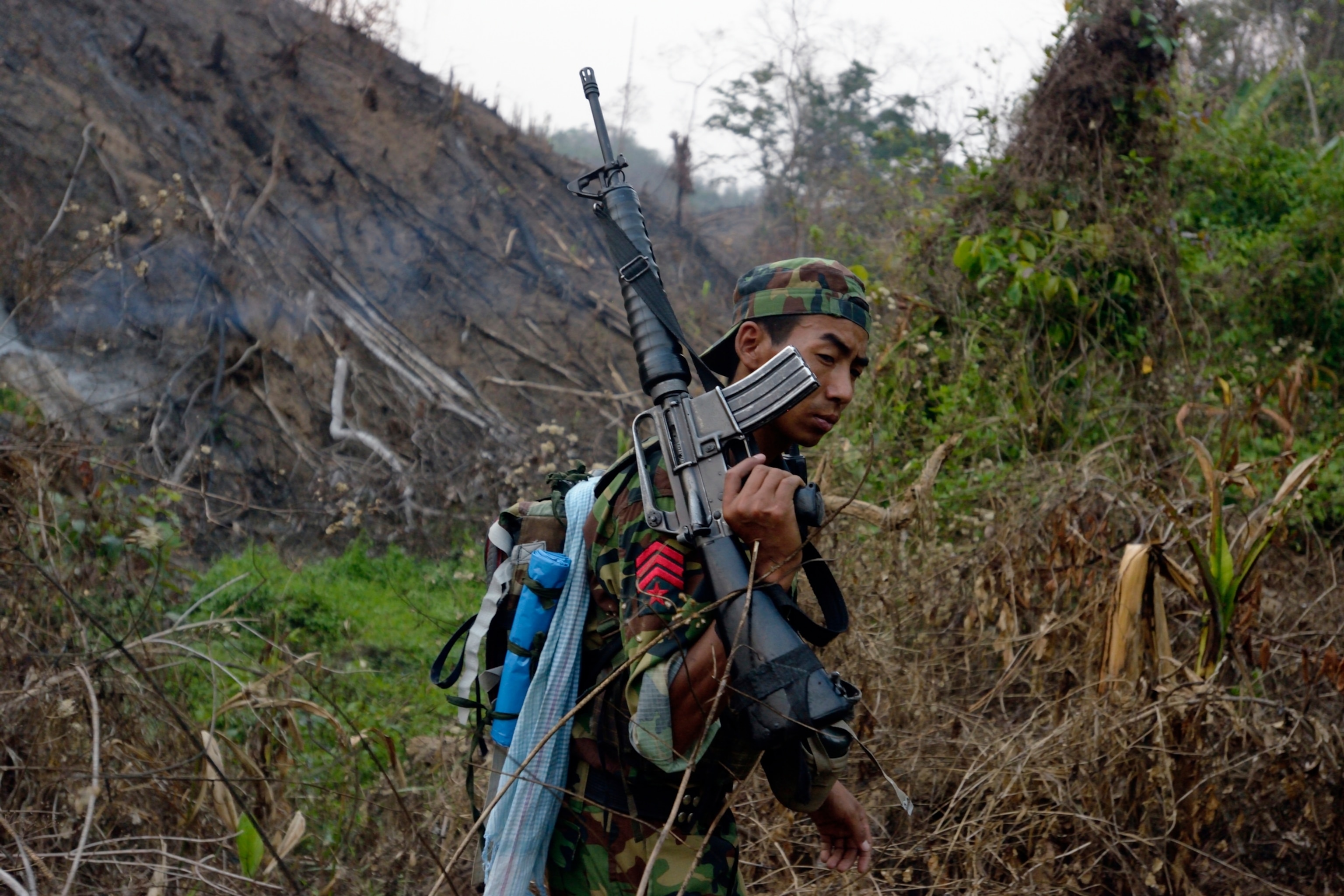
Today, half a dozen factions still battle one another, often brutally, for taxes, territory, and the right to represent the Nagas. No group is as powerful as the NSCN (IM), and the luxurious new church stands as a monument to its vitality.
But in an impoverished region where the annual per capita income is just $1,200, the NSCN (IM), more than other groups, has sparked resentment over its efforts to control everything from household taxes and business permits to import tariffs.
"You can't open a shop without paying them a bribe first," fumed one Angami Naga businessman in Dimapur.
Still, the aging leaders of the NSCN (IM) have positioned themselves as the sole negotiators with the Indian government. And now they seem to be putting their faith in a peace agreement with their longtime enemy.
A Tentative Peace Pact
One day in 1953, India's first prime minister, Jawaharlal Nehru, rose to speak at a ceremony in the Naga capital of Kohima, only to watch, in humiliation, as hundreds of Naga tribesmen walked out, slapping their rear ends as they left.
Nehru had dismissed their claim of independence as an “absurd demand.” But now, infuriated by the public insult, he vowed never to return—and he never did, except as the instigator of the ferocious army campaigns and stringent new laws designed to crush the nascent Naga insurgency.
Fast-forward 61 years to Prime Minister Narendra Modi’s first trip to Nagaland last December. There were no crude gestures this time. Only mutual affection—and a muted hope for peace and prosperity.
In one speech, Modi surprised the crowd of Nagas with a rousing cheer in a local dialect: "Kuknalim! Kuknalim!" The term, meaning "to the victory," is the rallying cry of the Naga insurgency.
Nine months later, on August 3, Modi was celebrating more than just a slogan, hailing his government's agreement with the NSCN (IM) as "not merely the end of a problem but the beginning of a new future."
The pact marks the culmination of 80 rounds of talks over nearly 17 years. But will it enable the disparate Naga tribes to emerge from decades of war without losing their sense of identity and independence?
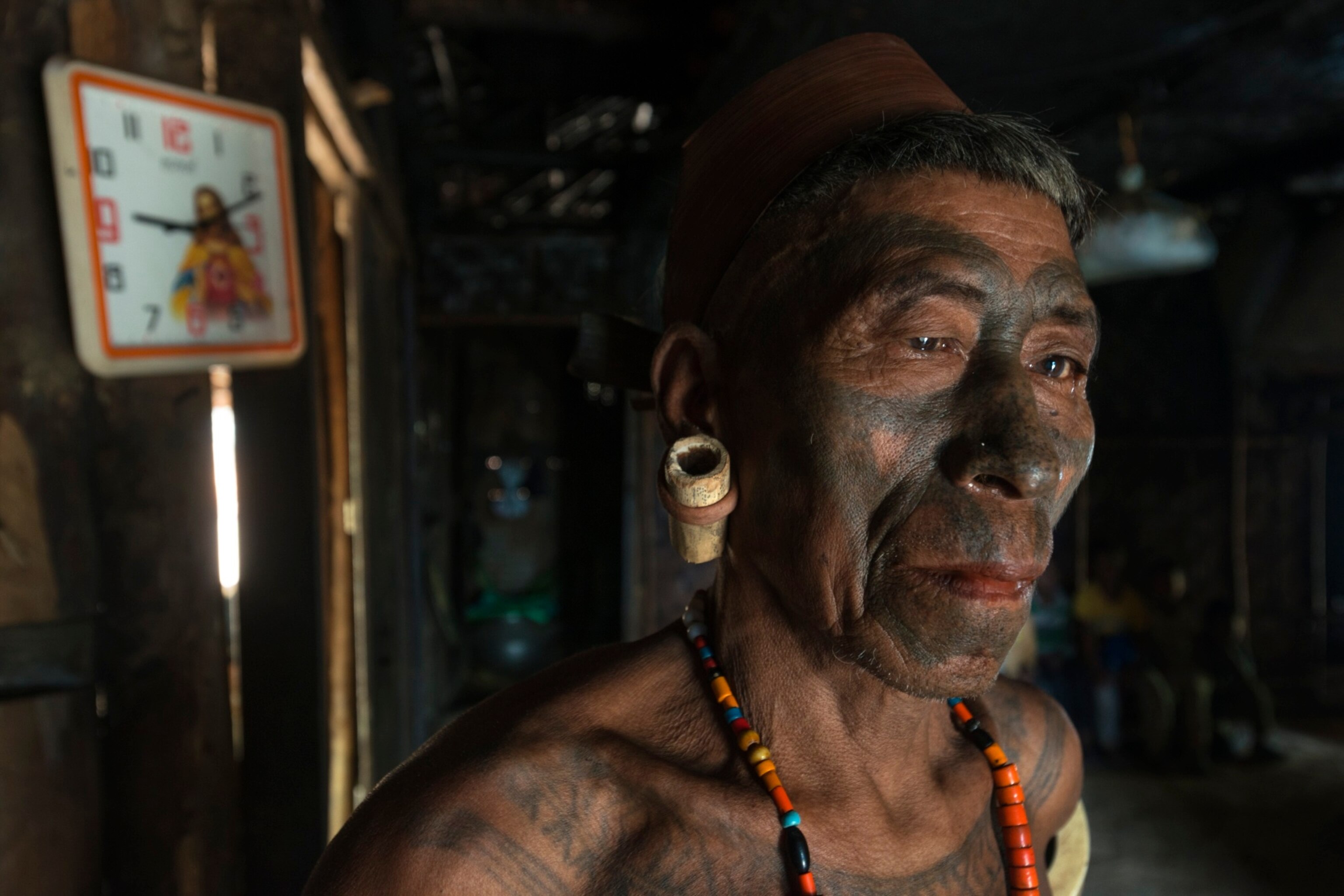
As much as Nagas long for peace, the agreement has not inspired euphoria. Many Naga leaders wonder how they can trust an agreement that was secretly negotiated by one rebel outfit to the exclusion of elected Naga officials, civil society groups, and other tribal factions.
The NSCN (IM), moreover, is dominated by a single tribe, the Tangkhul, who are resented in Nagaland, the state where 60 percent of Nagas live. (The Tangkhul are from the neighboring state of Manipur.)
And the other factions won’t go away. The NSCN (K), whose base sits across the border in Myanmar, holds sway in the northern and eastern Naga hills. In June, the group carried out the biggest single attack in two decades, killing 18 Indian army soldiers in an ambush. On August 19, the Indian government demanded that Myanmar hand over the group's leader.
If influential tribal and civic groups aren't included in an agreement, can there really be an enduring peace with India—or among the Nagas themselves?

10,000 Years in a Single Generation
The flickering promise of peace comes at a time when Nagas are stuck in limbo.
The younger generation in particular is hurtling toward an uncertain future. Far better educated than their parents, the young have no interest in working in the fields—yet the only valued jobs are scarce posts in the Indian-financed bureaucracy.
Young Nagas also seem to ricochet between cultural identities. Leaving a talk by a writer pleading for Naga culture to be saved from the "deluge" of global influences, I bumped into a group of Naga students prowling around in black uniforms and foam AK-47s—Call of Duty soldiers vamping in a costume contest.
"We Nagas have traveled 10,000 years in a single generation, so we're naturally susceptible to outside influences," says Akuonuo Khezhie, a Naga fashion model who incorporates traditional themes into her work as the director of the Northeast India Academy of Performing Arts. "But we've got to hold on to our traditions. That's what makes us who we are."
The Nagaland state government's ten-day Hornbill Festival every December sells itself as a celebration of Naga heritage, but beyond the thatched-roof longhouses called morungs and local dance troupes, traditional culture can be hard to find.
The festival opened last year with two heavily moussed men offering a saccharine rendition of "What a Wonderful World." The "warriors" who soon followed were, on closer inspection, young martial artists with hornbill feathers made of cardboard and daggers of aluminum foil.
As Nagaland begins to open up for the first time in its history, tourists are starting to trickle into remote areas in search of authentic Naga traditions—and, of course, the former headhunters.
In Nokying Wangnao's village of Hongphoi, the sight of a foreigner prompts a few of the 40 former headhunters to put on their headdresses and deer horns in hopes of receiving a donation.
Wangnao asks for nothing. Instead he offers a song of mourning. "We are the last of the tattooed people," he sings. "And you will never see us again."

